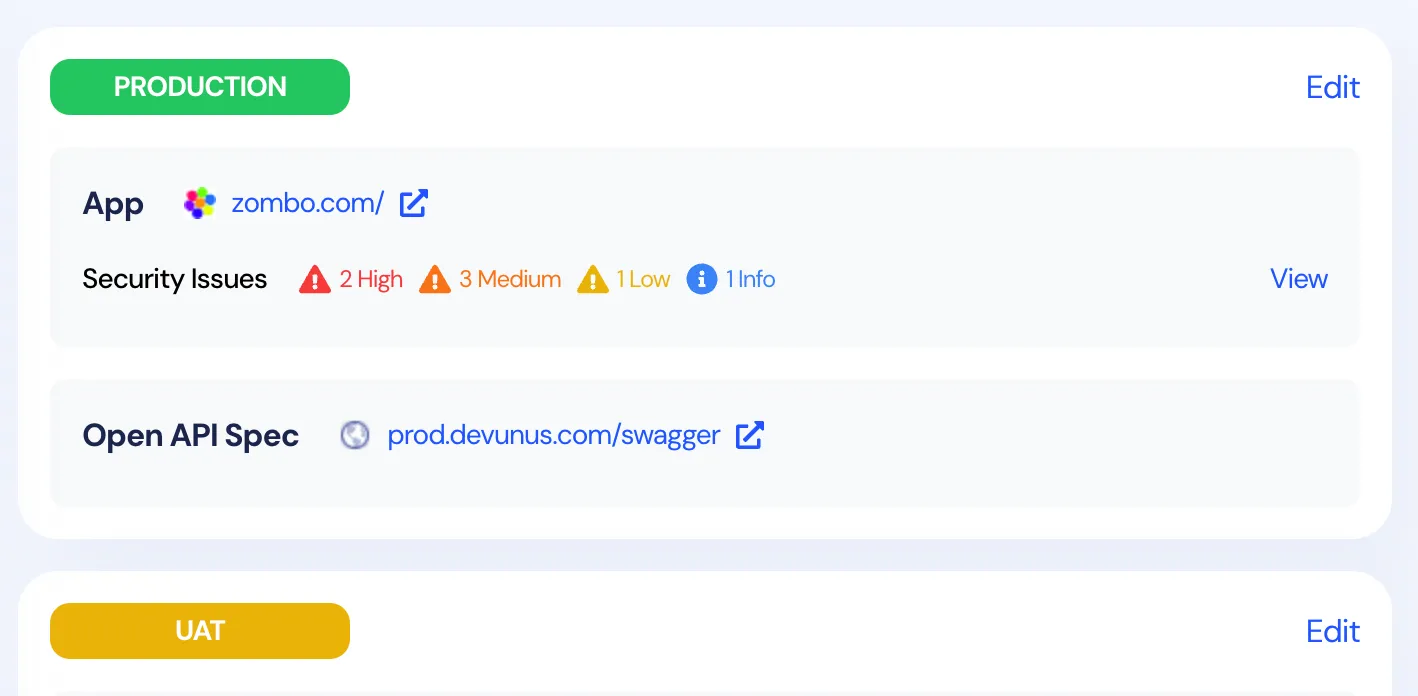Open API Audit
Get instant security insights for your OpenAPI specification. Our free tool performs 200+ comprehensive checks to identify security vulnerabilities, validate compliance, and provide actionable recommendations to strengthen your API design and improve developer experience.
API Audit Tool
What Our API Audit Tool Does
OpenAPI Specification Validation
Validates that your API follows the OpenAPI Specification (OAS) standards. Ensures proper structure, syntax, and compliance with the latest OpenAPI guidelines for maximum compatibility and documentation quality.
Security & Authentication Review
Analyzes your API's security definitions, authentication methods, and authorization protocols. Identifies potential security vulnerabilities and ensures your endpoints are properly protected with secure protocols.
Data Schema Quality Assessment
Evaluates the quality and robustness of your API's data schemas, parameters, and response models. Ensures strong type definitions, proper validation rules, and comprehensive documentation for better API reliability.
OpenAPI Best Practices
OpenAPI Best Practices
Consistent Naming Conventions
Use consistent naming across all API elements. For paths, use kebab-case (e.g., /user-profile/get-settings). For schema/model names, use PascalCase (e.g., UserProfile). For properties, use snake_case (e.g., first_name, account_status).
Operation IDs
Always include unique operationId values for each endpoint. These are crucial for code generation tools to create meaningful method names and for API documentation tools to provide clear references.
Comprehensive Documentation
Document all query arguments, parameters, and schema objects with clear descriptions, including min/max values and defaults. This helps developers understand the API's capabilities and constraints.
Response Code Clarity
Capture all operation success and error response codes, including details about the error response and why it may have happened. Clear response codes help developers handle different scenarios appropriately.
Standardized Error Handling
Define a single error response schema to standardize error handling across operations. This reduces complexity for clients, as they only need to handle one error format, and ensures consistent error reporting.
Schema Validation
Validate schemas to ensure they have appropriate constraints like maxLength and pattern for string properties. Proper validation prevents invalid data from being processed, enhancing security and data integrity.
Consistent Pagination Patterns
Implement standardized pagination across your API using either cursor-based (recommended for large datasets) or offset-based approaches. Include optional filtering and sorting parameters.
Complete Security Definitions
Ensure security definitions are complete with specified security schemes. This is crucial for protecting sensitive data and ensuring that only authorized users can access certain API functionalities.
Rate Limiting
Define rate limits to prevent abuse and ensure fair usage. Consider using tools like API Management (APIM) or Web Application Firewall (WAF) to enforce these limits.
API Versioning
Implement API versioning to manage changes and ensure backward compatibility. The most common practice is to include the version number in the URL path (e.g., /v1/resource) or in the request headers.
Deprecation Policy
Clearly communicate deprecation policies and timelines for API changes. Provide advance notice and documentation to help users transition smoothly.
Testing
Implement thorough testing, including unit tests and integration tests, to ensure API reliability. Automated testing can help catch issues early and improve the development process.
Performance Optimization
Monitor and optimize API performance to ensure fast response times. Use performance monitoring tools to identify bottlenecks and optimize resource usage.
Use Automated Tools
Regularly audit your APIs using a tool like Devunus to automatically identify potential security vulnerabilities and improve the overall developer experience.
Regular Security Checks
Regularly check your API against the OWASP Top 10 API Security Risks to identify and mitigate potential vulnerabilities. Staying informed about common security threats helps maintain a secure API environment.
🔗 Additional Resources
Stay updated with the latest API security best practices:
🛡️OWASP API Security Top 10Build your Software Catalog
Your Software Catalog is your central dashboard for discovering, monitoring and securing all your software components and dependencies. By adding your websites to the catalog, Devunus will keep an eye on them with continuous monitoring.
- Components and dependencies
- Security and compliance tracking
- Component health scores
- Version and dependency tracking
- Documentation
